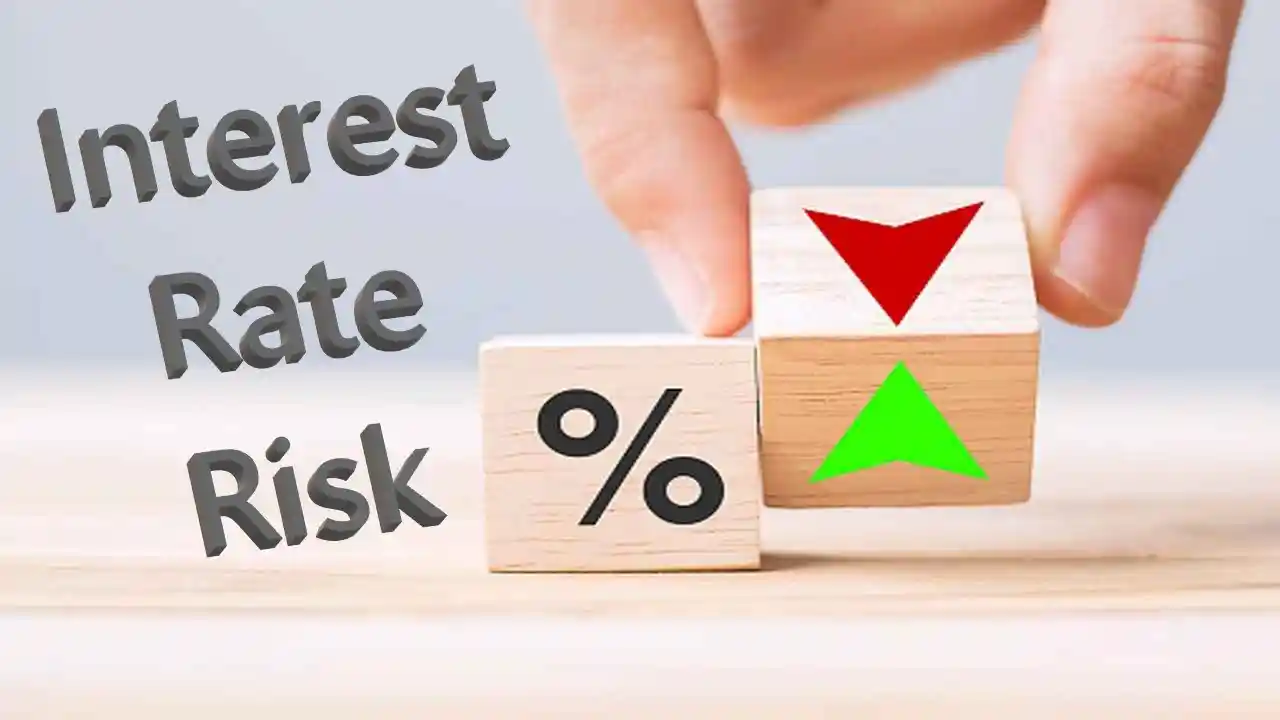Interest rates have the potential to climb or fall. This danger is called as “Interest Rate Risk.” We will see what is interest rate risk meaning, examples and interest rate risk types in this topic.
When the interest rate on a bond or CD rises, the price of all instruments linked to that bond or CD declines. They have to spend more money on other things, and the interest rate on their debt climbs. This “opportunity cost” is inextricably linked to the possibility of rising interest rates.
What is Interest Rate Risk?
Interest rate fluctuations can cause an investment to lose money. When interest rates rise, bonds and other fixed-income investments lose value. The amount of time it takes for the price of a bond to change when interest rates fluctuate. Investors can hedge bonds by using interest rate swaps or by adjusting bond maturity dates.
An Overview of Interest Rate Risk
Changes in interest rates can have an influence on a variety of assets. This has the greatest impact on fixed-income securities. As a result, bondholders keep a careful eye on interest rates and base investment decisions on predicted rate fluctuations.
As interest rates rise, the value of fixed-income securities declines (and vice versa). The reasoning behind this is that as interest rates rise, so does the cost of not investing in something more profitable. A decent bond offer becomes less tempting as interest rates climb. In this scenario, a 7% fixed rate bond sells for $1,000 par value, while other interest rates are also 7%. When those rates rise to 8% or 9%, the same 7% rate becomes less appealing. The bond’s value must fall to compensate for this economic disadvantage. Who wants to buy a bond that pays 7% when another one offers 9%?
Furthermore, once interest rates rise above a particular threshold, investors gravitate toward investments that reflect the rate increase. Prior to the rate change, the only way for existing securities to compete with new ones was to cut their prices.
Reducing or eliminating interest rate risk involves hedging or diversifying your portfolio to reduce or eliminate the impact of rate swings.
Examples of Interest Rate Risk
Consider a $1000 five-year bond with a 3% interest rate. The interest rate then climbs to 4%. Bondholders will find it difficult to sell when higher-yielding new bonds enter the market. Lower demand typically associates weaker secondary market prices. The value of the bond may fall below the purchasing price. This is also correct. When interest rates fall below 5%, bonds retain their value because the bondholder receives a higher fixed rate of return than the market.
Consider another example of an interest rate risk. Consider the following scenario: Mr. XYZ invests $100,000 in 100 rupee bonds. These avenues of investment pay a fixed yearly return of 5%. The cost of a year’s investment is $105,000. If the interest rate on newly issued securities is 6%, this investment would have returned $106,000 in a year.
Types of Interest Rate Risks on a Business
It is determined by a number of factors. This section goes over each of these things in further detail.
Volatility in the Stock Market
Market volatility and inflation can have a significant impact on interest rate risk since they make refinancing and other activities more difficult. In such instances, outgoing financial flow frequently exceeds incoming cash flow, making the institution’s operations difficult.
Risks of a Firm Failing to Pay its Invoices
The debt-to-equity ratio of a corporation determines its debt risk. When interest rates rise, a company pays more interest to its investors. As a result, an institution’s credit risk grows.
Length of the Term
Your loan terms, as a borrower or lender, influence your institution’s risk of rising interest rates. Businesses and other organisations that charge a set interest rate on receivables may lose money if they need to refinance. Rates of interest may grow or decline.
Rates of Exchange
Currency swings have an impact on any company that has international debt. As the value of the dominant currency diminishes, so do the interest rate risks associated with it. As the value of the currency rises, so do the risks.
Types of Interest Rate Risks for Investors
Any investor, whether individual or corporate, must evaluate a variety of interest rate risks. Some of these points are well-explained in this article.
The Risk of Reinvestment
If their interest rate changes, they may sell their stocks. That means that the opportunity to reinvest now and get a good return may not come up again. One of two types of interest rate risk is reinvestment risk.
The Cost is Unknown
That’s called “price risk.” It denotes that the price of a bond or certificate may fluctuate. This means that when the time comes to sell the investment, it may lose or earn money in an unanticipated manner.
Methods for Managing Interest Rate Risks
Understanding interest rate risk is crucial for avoiding bankruptcy. Less is understood about regulating interest rates and the risks that they entail.
Make more Secure Investments
Purchase short-term bonds and certificates to mitigate interest rate change risk. Short-term bonds are less vulnerable to changes in interest rates. Because they are not long-term, short-term instruments are less harmful than long-term instruments.
Purchase Long-term Bonds
Selling long-term bonds is a common way to make money. This enables investors to manage fear more effectively by investing in higher-paying bonds. Interest rate risk is reduced by reinvesting in assets with shorter maturities.
Diversification
If a bondholder is concerned that interest rate risk will destroy the value of his portfolio, he can diversify his holdings (e.g., equity). A bond investor can diversify his portfolio by holding both short- and long-term debt.
Floating Rate Bonds
The interest rate on floating-rate bonds swings with the market. Investing in these assets is prudent due to their volatile returns. As a result, they should be included in a well-balanced investment portfolio. While it cannot consistently forecast your revenues, it can help to mitigate the risk of interest rate fluctuations.
The risk management strategies discussed above can have a significant impact on a company or an investment. To avoid loss of investment value owing to interest rate risk, risk management is essential.
Hedging
To manage interest rate risk, various hedging options are available. These tactics are routinely employed while purchasing derivatives. Interest rate swaps and options are two prominent ways to benefit from interest rates. Two types of options: Buy or sell an item at a set price and date, including FRAs and futures.
Conclusion
The interest rate is inversely proportional to the value of the security. Interest rate risk has an impact on all investments. The interest rate influences the value of the company’s existing assets as well as future cash flows. Hope this information on meaning of interest rate risk examples, methods of interest rate risk types were useful to you. For more information on FDI issue, read this comprehensive guide.






